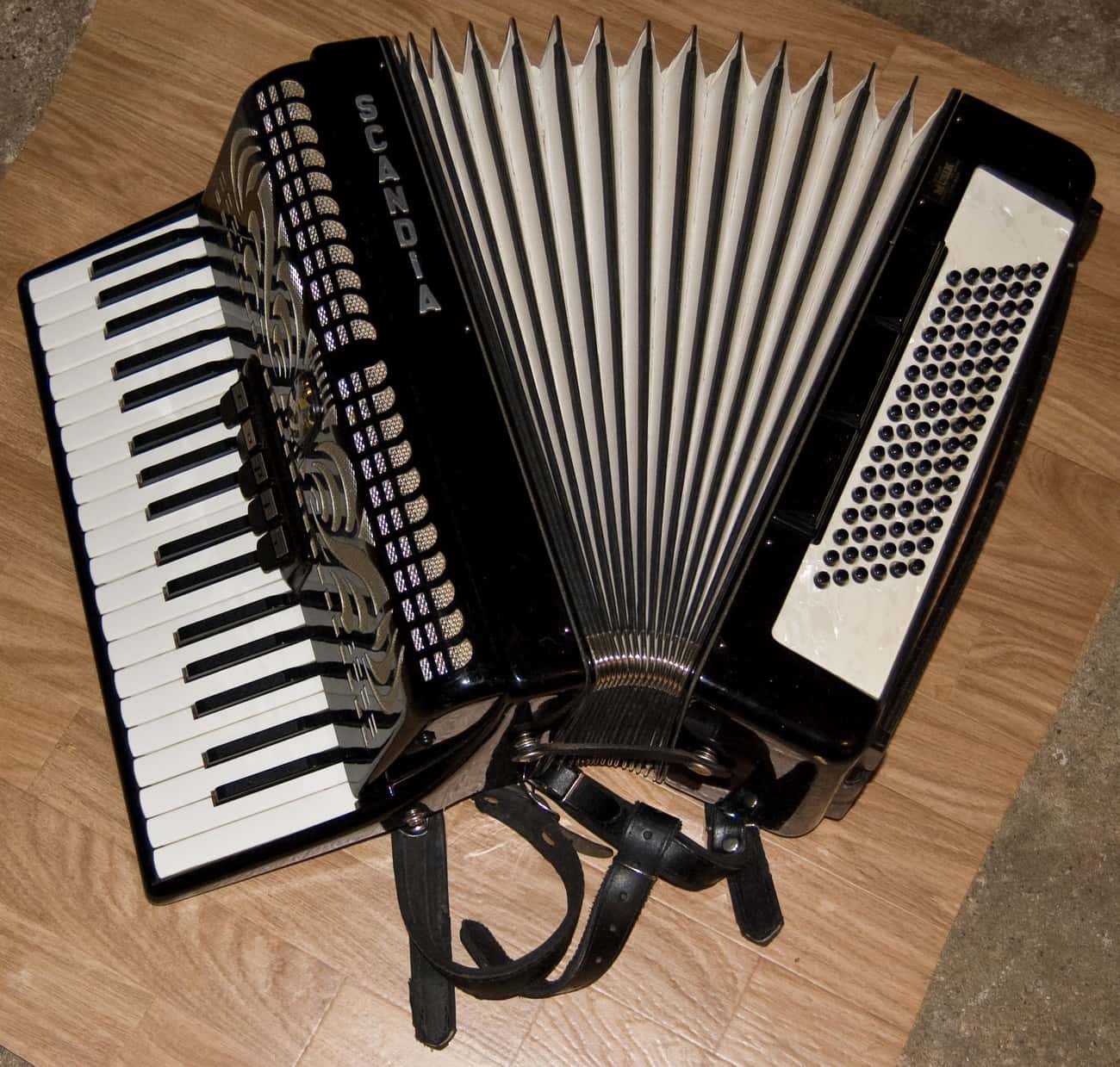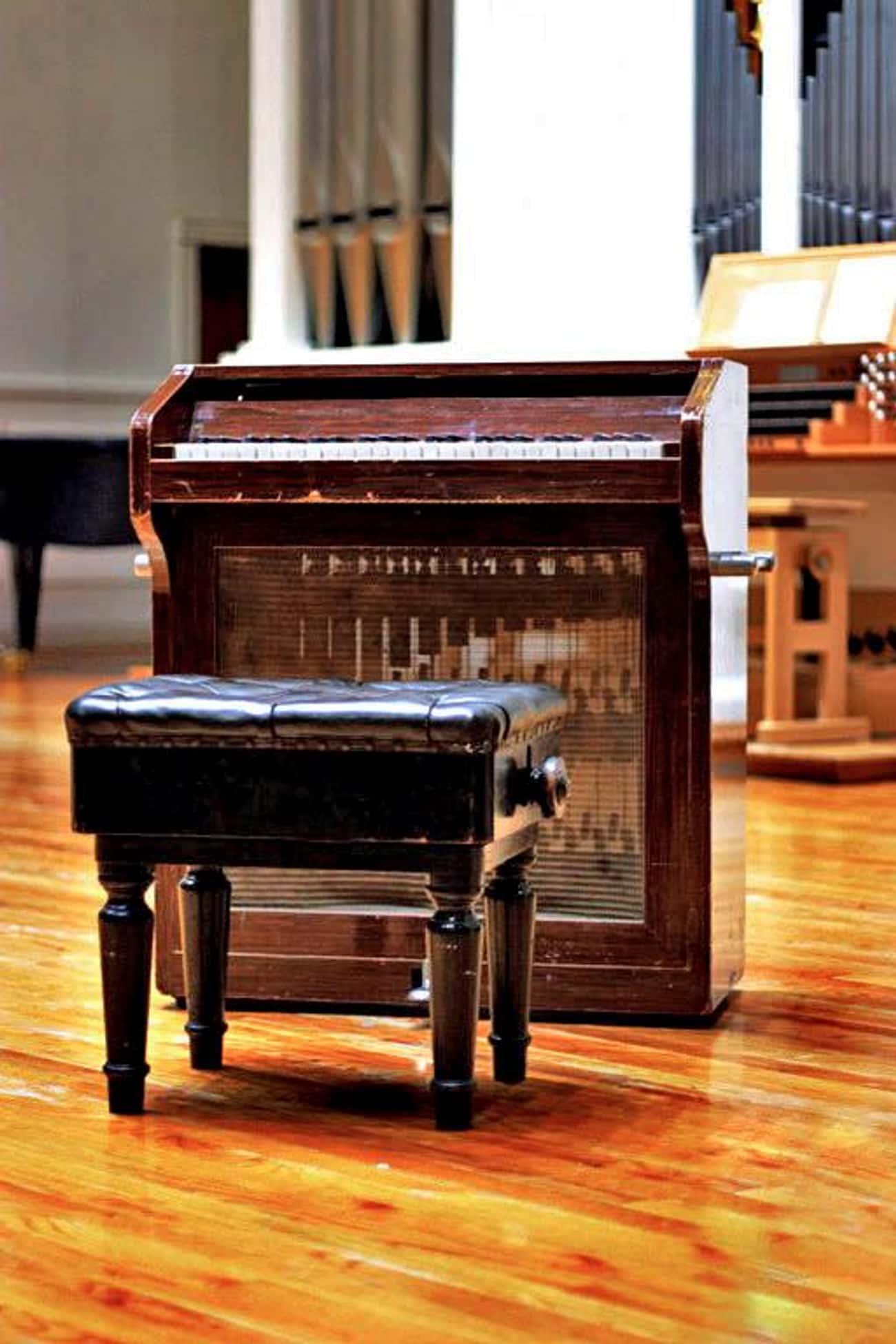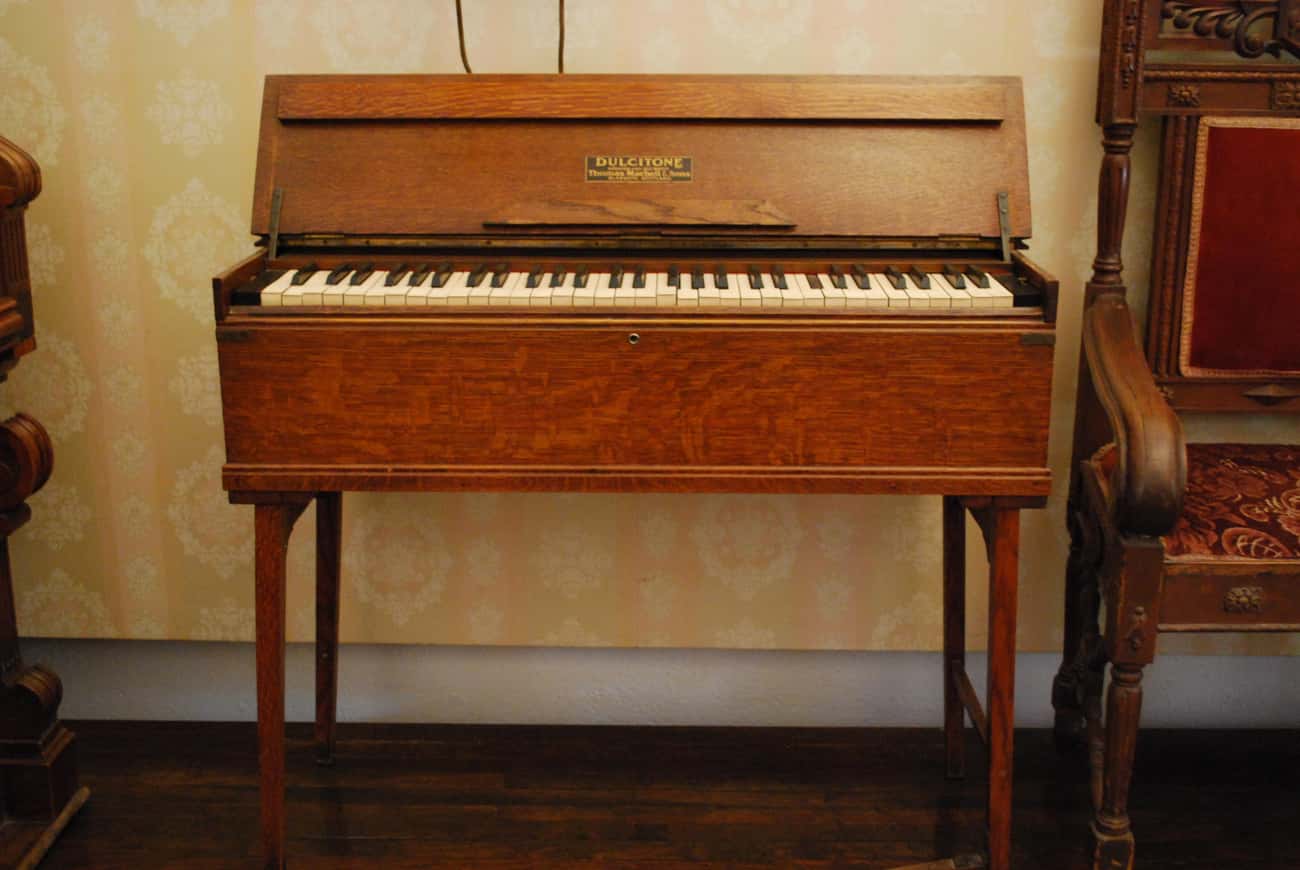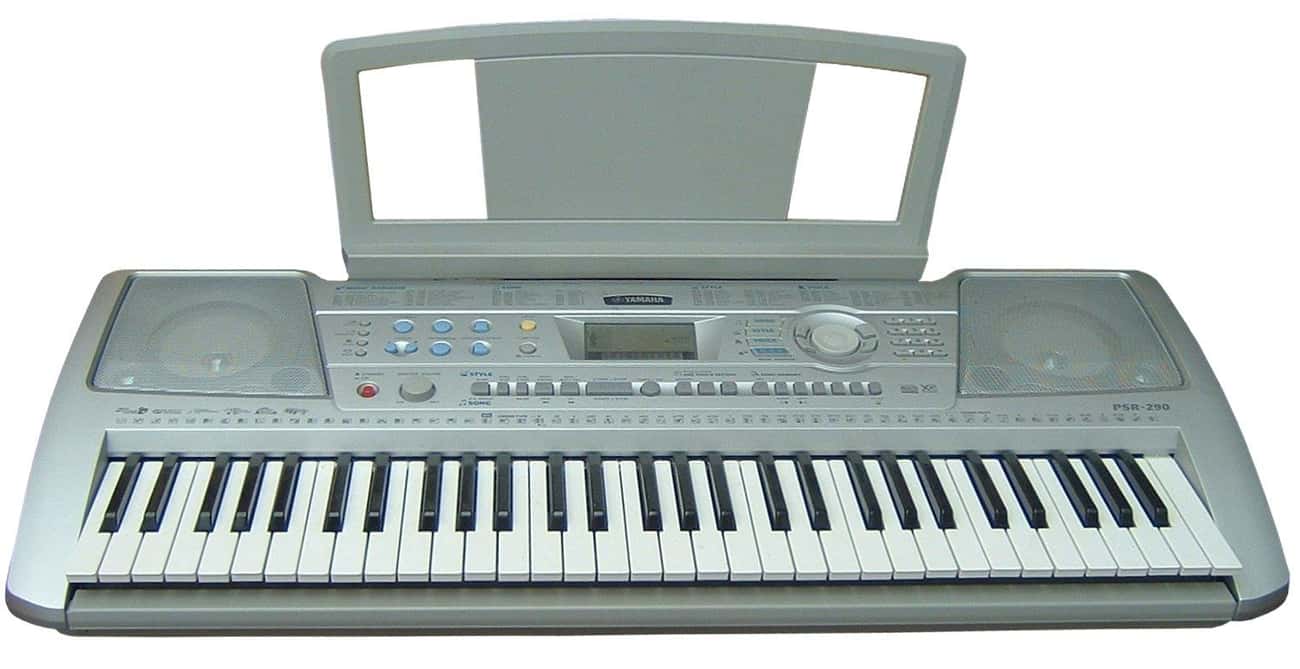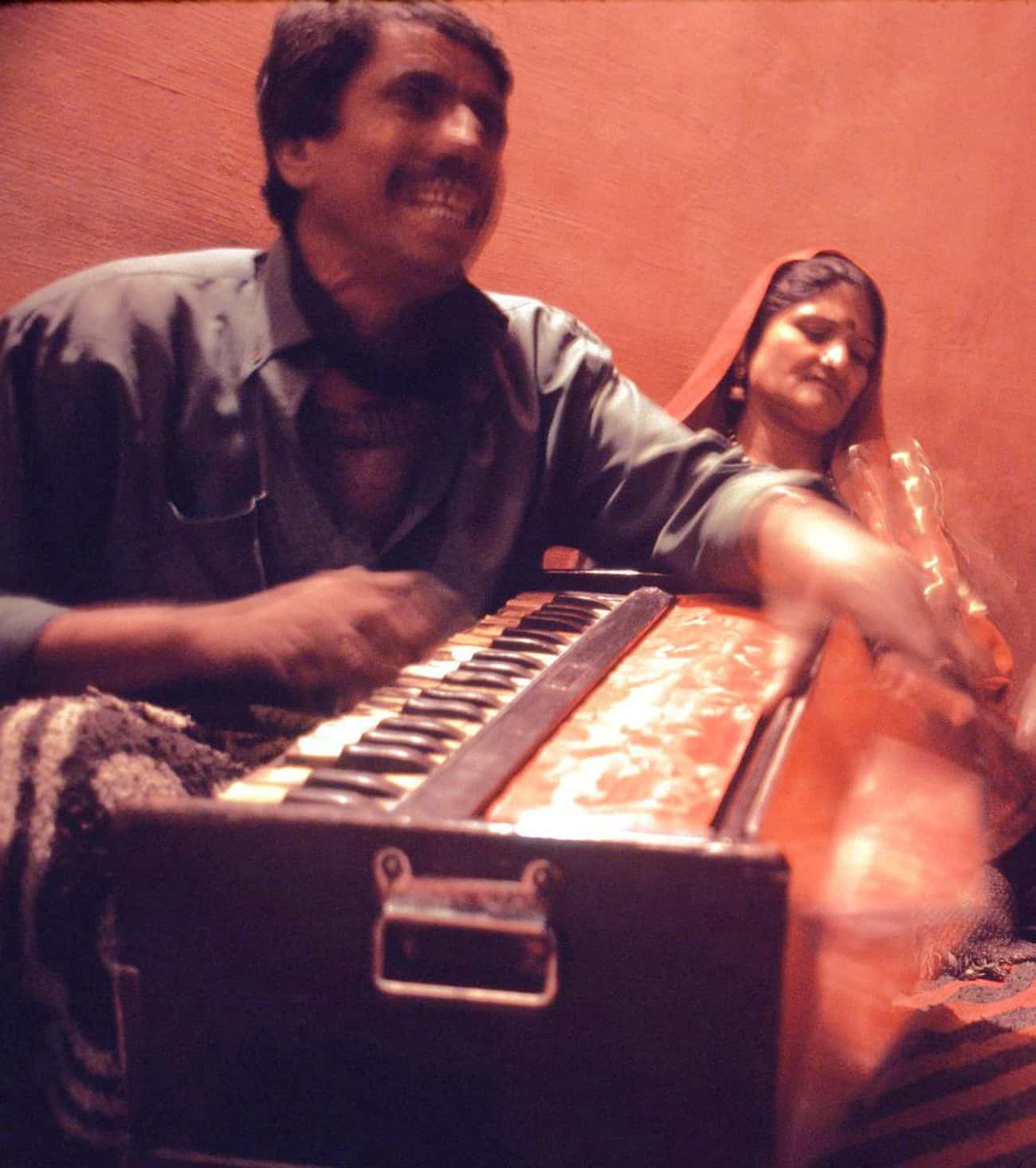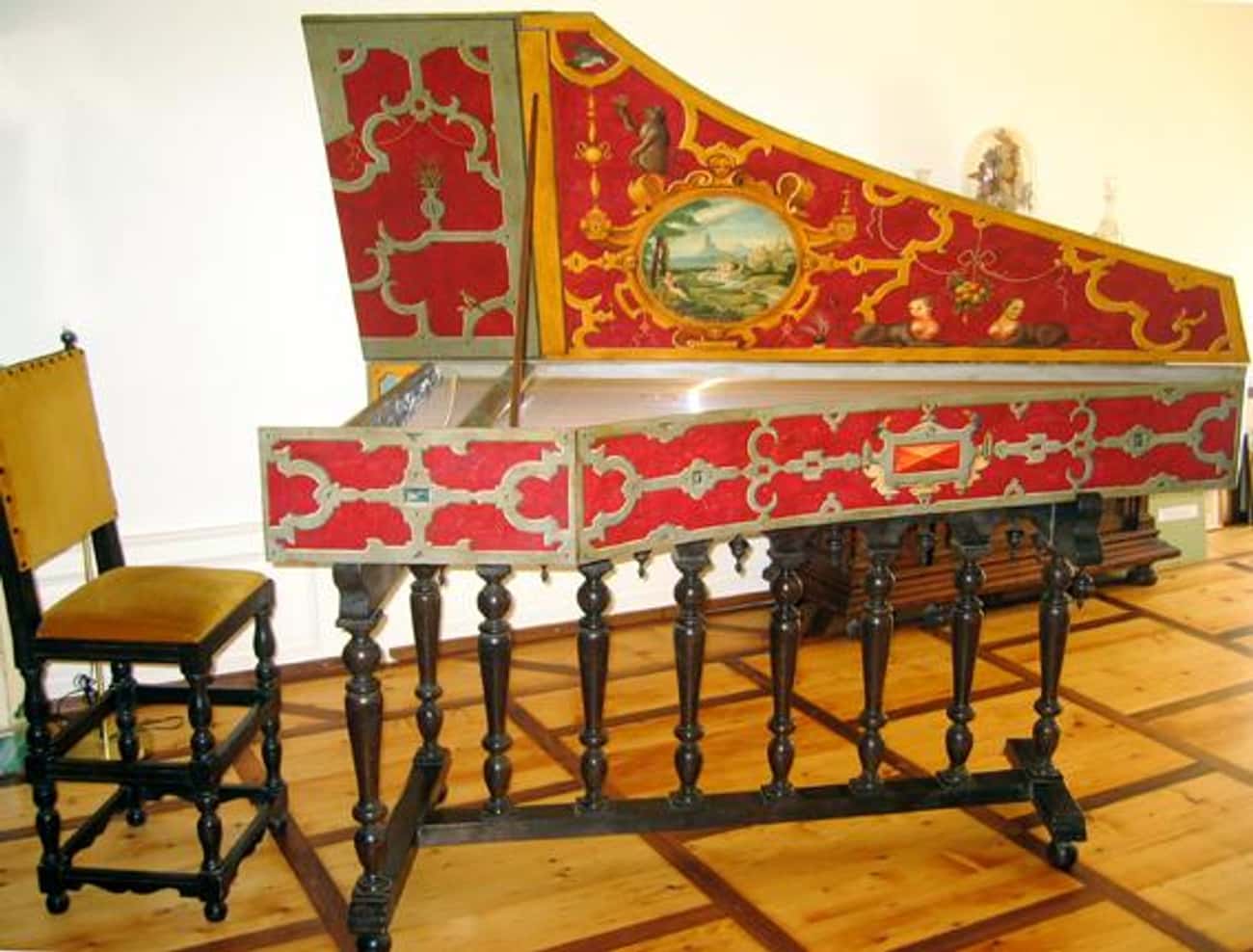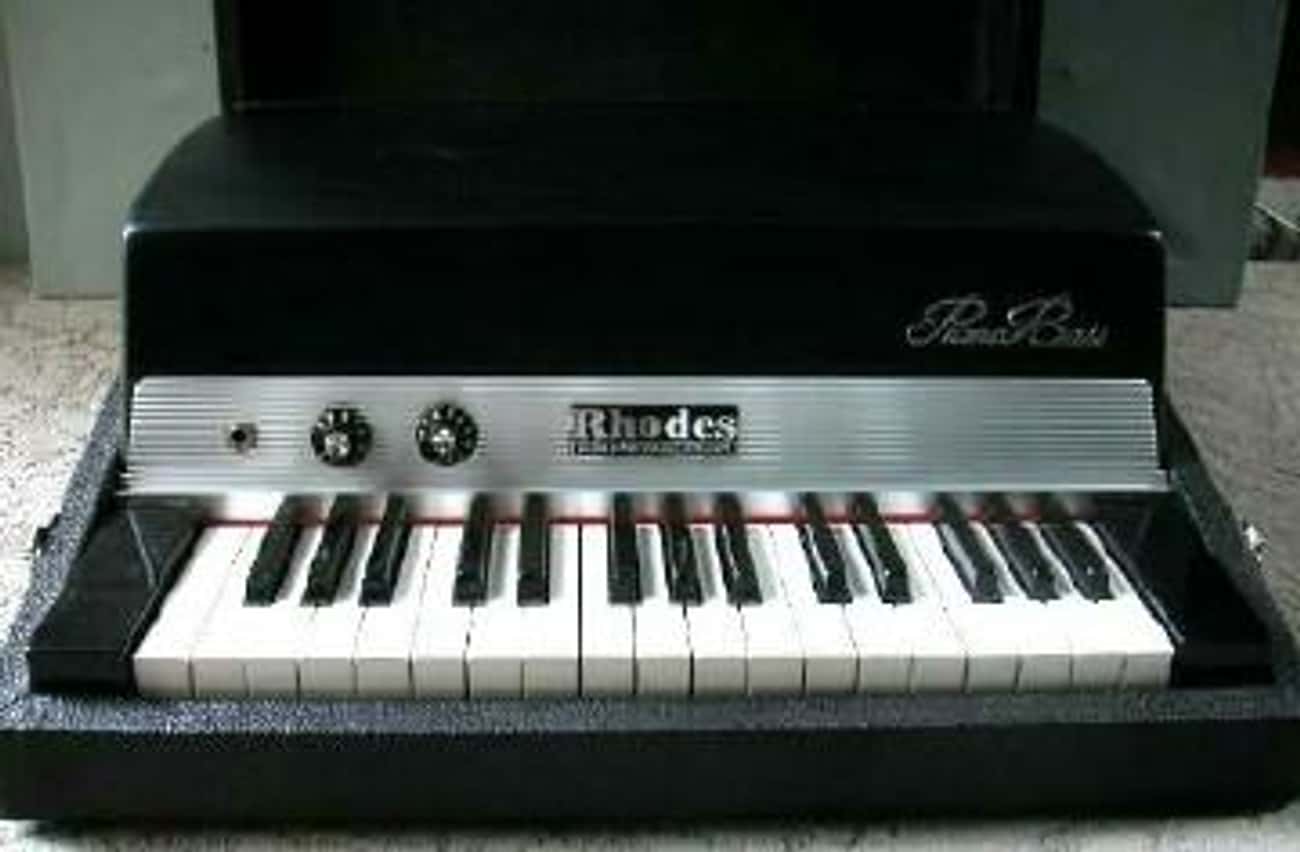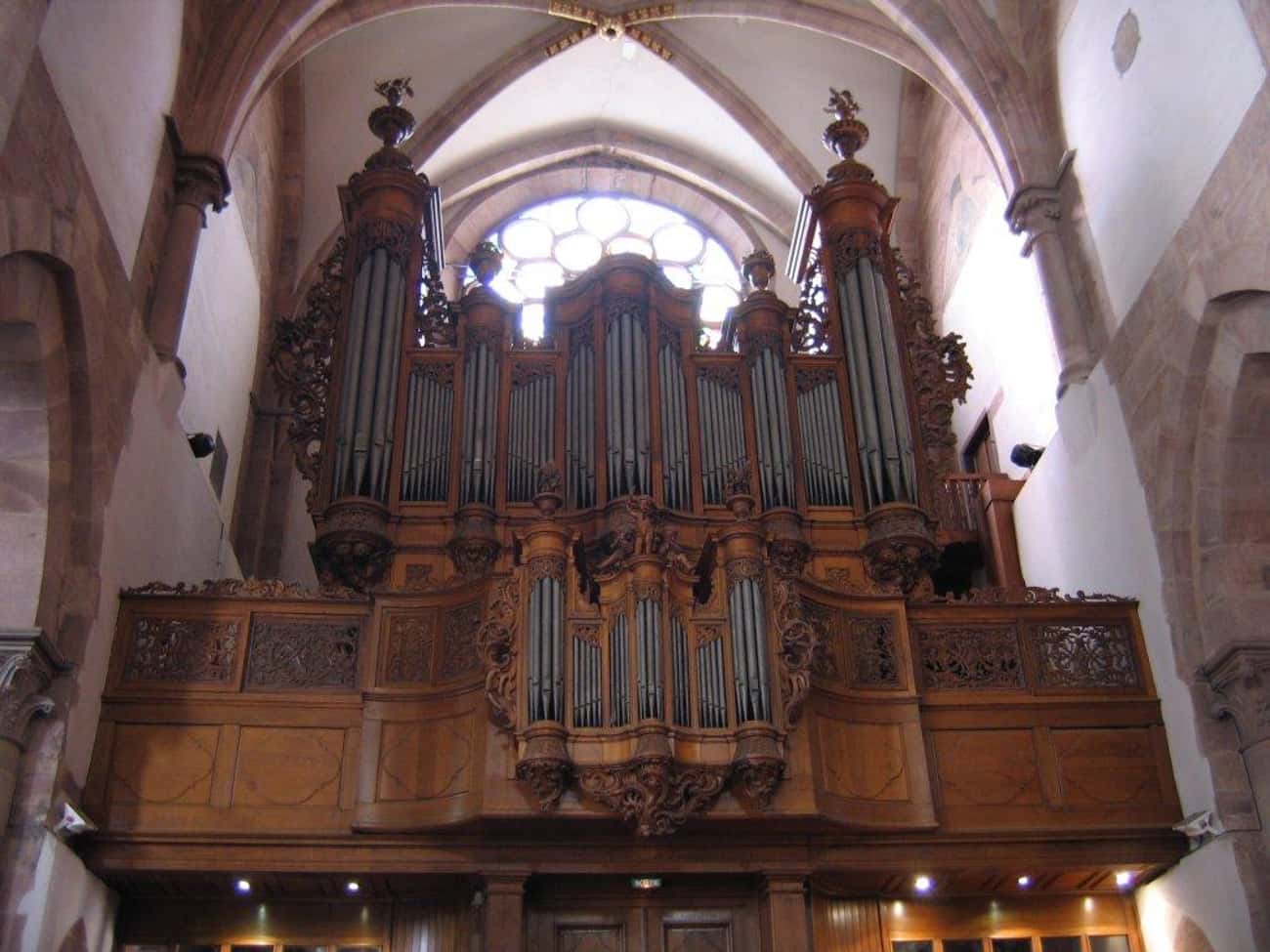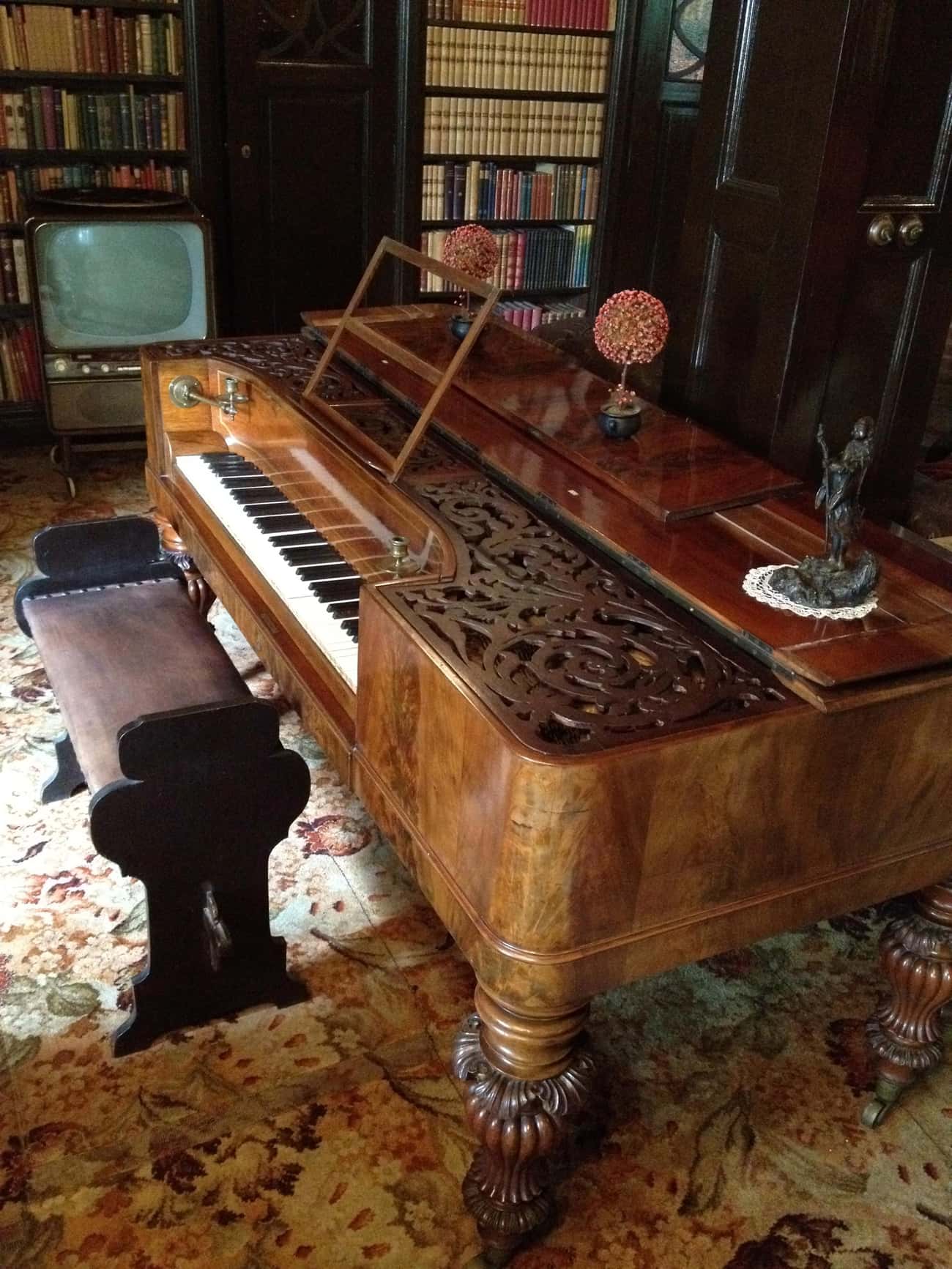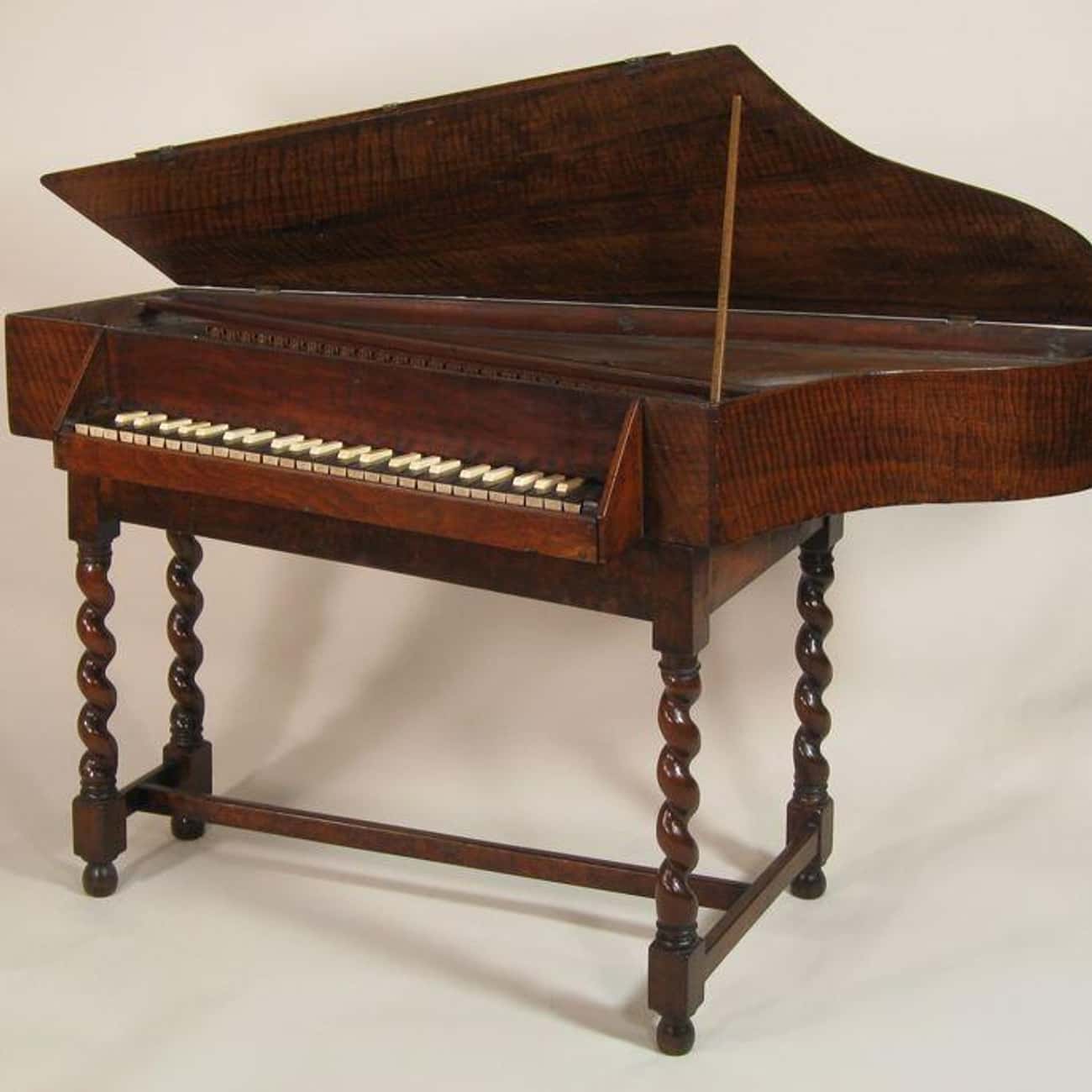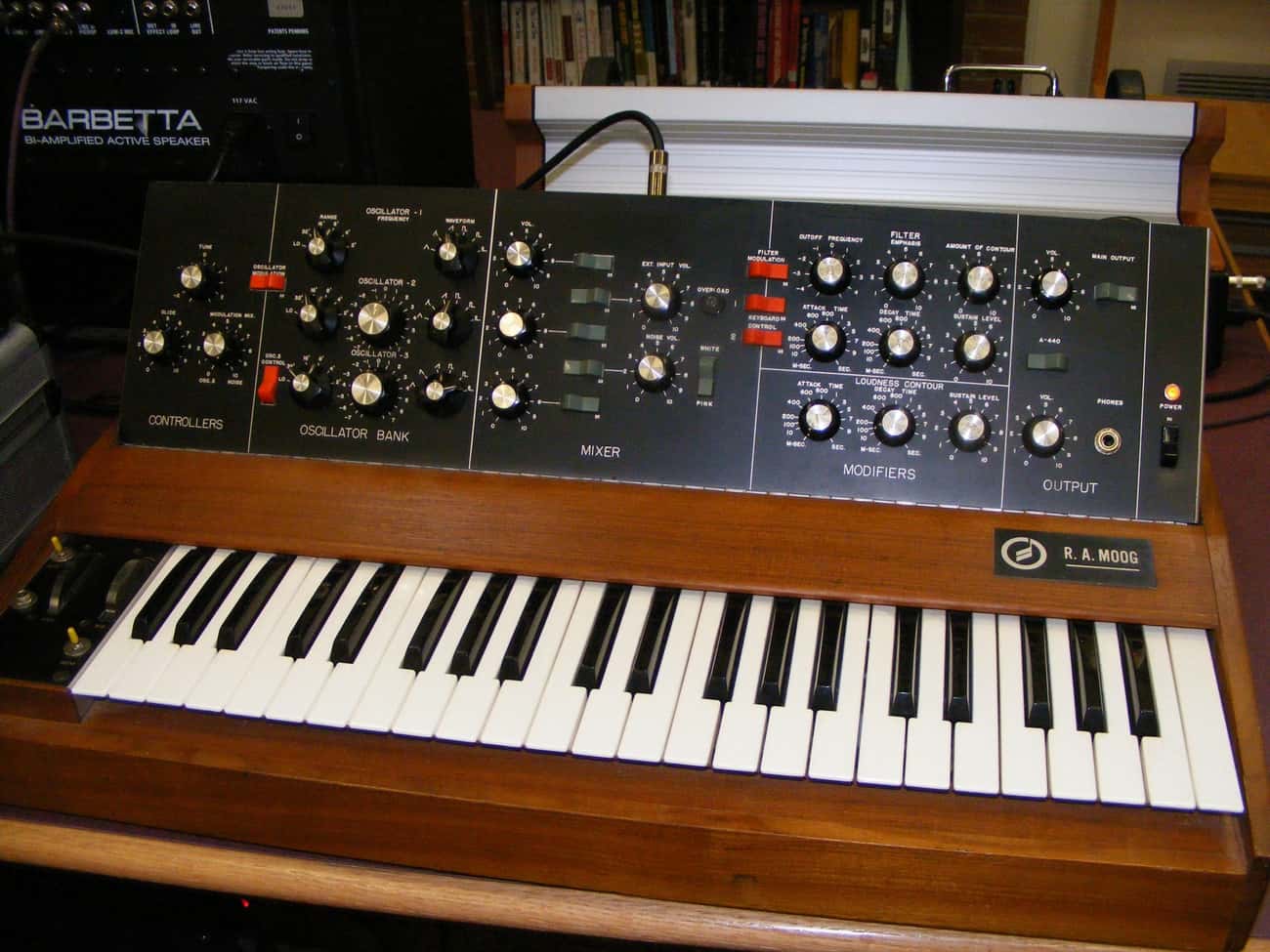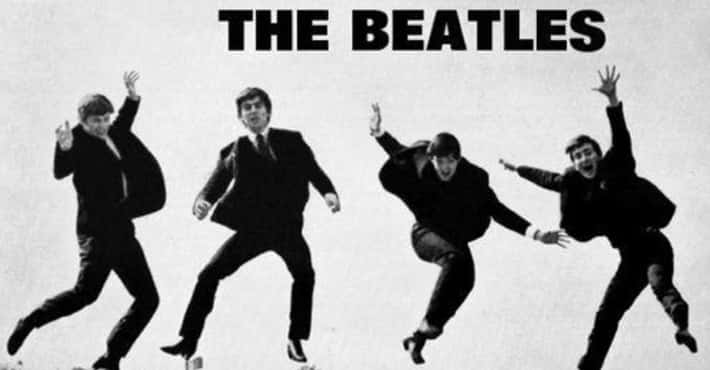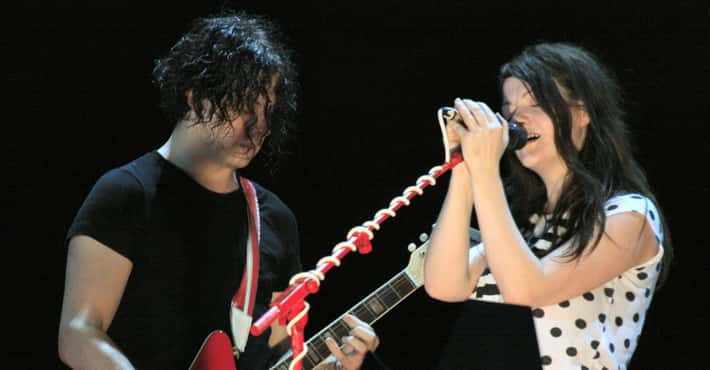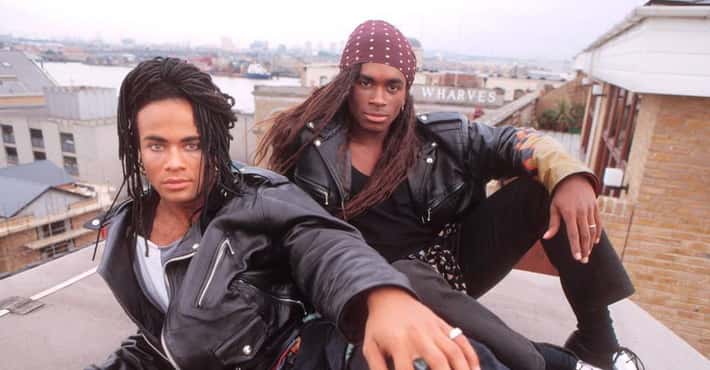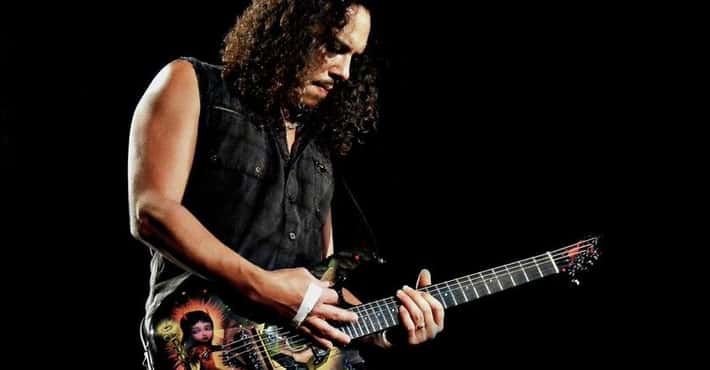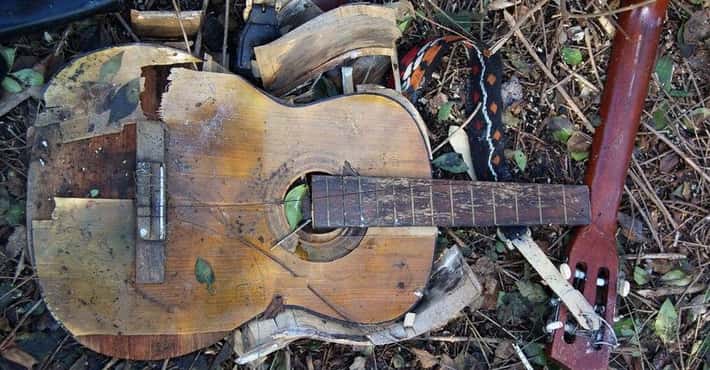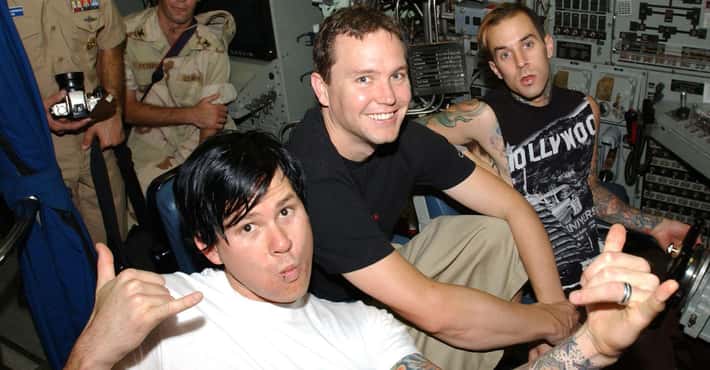Keyboard instrument - Instruments in This Family
Keyboard instrument: list of all the most popular musical instruments in this family. Any well-known instrument in the Keyboard instrument instruments family is included along with photos when available. List includes Harpsichord, Keyboard controller, more.
- Photo: Metaweb (FB) / CC-BY-2.5Accordions are a family of box-shaped musical instruments of the bellows-driven free-reed aerophone type, colloquially referred to as a squeezebox. A person who plays the accordion is called an accordionist. The concertina and bandoneón are related; the harmonium and American reed organ are in the same family. The instrument is played by compressing or expanding the bellows while pressing buttons or keys, causing valves, called pallets, to open, which allow air to flow across strips of brass or steel, called reeds, that vibrate to produce sound inside the body. The performer normally plays the melody on buttons or keys on the right-hand manual, and the accompaniment, consisting of bass and pre-set chord buttons, on the left-hand manual. The accordion is widely spread across the world. In some countries it is used in popular music, whereas in other regions it tends to be more used for dance pop and folk music and as well as in regional and is often used in folk music in Europe, North America and South America. Nevertheless, in Europe and North America, some popular music acts also make use of the instrument.
- The celesta or celeste is a struck idiophone operated by a keyboard. It looks similar to an upright piano, or a large wooden music box. The keys connect to hammers that strike a graduated set of metal plates suspended over wooden resonators. Four- or five-octave models usually have a pedal that sustains or damps the sound. The three-octave instruments do not have a pedal because of their small "table-top" design. One of the best-known works that uses the celesta is Tchaikovsky's "Dance of the Sugar Plum Fairy" from The Nutcracker. The sound of the celesta is similar to that of the glockenspiel, but with a much softer and more subtle timbre. This quality gave the instrument its name, celeste meaning "heavenly" in French. The celesta is a transposing instrument; it sounds an octave higher than the written pitch. Its sounding range is generally considered as C4 to C8, where C4 = middle C. The original French instrument had a five-octave range, but because the lowest octave was considered somewhat unsatisfactory, it was omitted from later models. The standard French four-octave instrument is now gradually being replaced in symphony orchestras by a larger, five-octave German model.
- The clavichord is a European stringed keyboard instrument known from the late Medieval, through the Renaissance, Baroque and Classical eras. Historically, it was mostly used as a practice instrument and as an aid to composition, not being loud enough for larger performances. The clavichord produces sound by striking brass or iron strings with small metal blades called tangents. Vibrations are transmitted through the bridge to the soundboard. The name is derived from the Latin word clavis, meaning "key" and chorda meaning "string, especially of a musical instrument".
- A dulcitone is a keyboard instrument in which sound is produced by a range of tuning forks, which vibrate when struck by felt-covered hammers activated by the keyboard. The instrument was designed by Thomas Machell of Glasgow and manufactured by the firm of Thomas Machell & Sons during the late nineteenth and early twentieth centuries. A significant feature of the dulcitone was its portability, a product of its lightweight and compact construction and the fact that the tuning forks were not prone to going out of tune. However, the volume produced is extremely limited, and the dulcitone's part is frequently substituted by a glockenspiel. One piece scored for the dulcitone is Vincent d'Indy's Song of the Bells In 1911 there were 3 versions listed: Style B, with 3½ octaves in solid mahogany or in solid oak complete with folding stand, for £12; Style R - in mahogany or oak with 4 octaves for £15; Style F - in mahogany or oak with 5 octaves, for £18. Surviving examples exist as far afield as New Zealand, where one is preserved in the Whittaker's Musical Museum. The dulcitone continues to play a role in popular music.
- An electronic keyboard is an electronic or digital keyboard instrument.
- Photo: Metaweb (FB) / Public domainA harpsichord is a musical instrument played by means of a keyboard. It produces sound by plucking a string when a key is pressed. "Harpsichord" designates the whole family of similar plucked keyboard instruments, including the smaller virginals, muselar, and spinet. The harpsichord was widely used in Renaissance and Baroque music. During the late 18th century, it gradually disappeared from the musical scene with the rise of the piano. But in the 20th century, it made a resurgence, being used in historically informed performances of older music, in new compositions, and in popular culture.
- Photo: Metaweb (FB) / Public domainKeyboard bass is the use of a low-pitched keyboard or pedal keyboard to substitute for the bass guitar or double bass in music.
- The Vako Orchestron is a keyboard instrument, which produces its sound through electronic amplification of sound pre-recorded on an optical disc. It is the professional version of the Mattel Optigan.
- Photo: Metaweb (FB) / CC-BY-SA-2.5In music, the organ is a keyboard instrument of one or more divisions, each played with its own keyboard, played either with the hands or with the feet. The organ is a relatively old musical instrument, dating from the time of Ctesibius of Alexandria, who is credited with inventing the water organ. It was played throughout the Greek and Roman world, particularly during races and games. During the early medieval period it spread from the Byzantine Empire, where it continued to be used in secular and imperial court music, to Western Europe, where it gradually assumed a prominent place in the liturgy of the Catholic Church. Subsequently it re-emerged as a secular and recital instrument.
- Photo: Metaweb (FB) / Public domainThe piano is a musical instrument played using a keyboard. It is widely employed in classical and jazz music for solo and ensemble performances, accompaniment, and for composing and rehearsal. Although the piano is not portable and often expensive, its versatility and ubiquity have made it one of the world's most familiar musical instruments. An acoustic piano usually has a protective wooden case surrounding the soundboard and metal strings, and a row of 88 black and white keys. The strings are sounded when the keys are pressed, and silenced when the keys are released. The note can be sustained, even when the keys are released, by the use of pedals. Pressing a key on the piano's keyboard causes a padded hammer to strike strings. The hammer rebounds, and the strings continue to vibrate at their resonant frequency. These vibrations are transmitted through a bridge to a soundboard that amplifies by more efficiently coupling the acoustic energy to the air. When the key is released, a damper stops the strings' vibration, ending the sound.
- A spinet is a smaller type of harpsichord or other keyboard instrument, such as a piano or organ.
- Photo: Metaweb (FB) / CC-BY-SA-2.0A sound synthesizer is an electronic musical instrument that generates electric signals converted to sound through loudspeakers or headphones. Synthesizers may either imitate other instruments or generate new timbres. They are often played with a keyboard, but they can be controlled via a variety of other input devices, including music sequencers, instrument controllers, fingerboards, guitar synthesizers, wind controllers, and electronic drums. Synthesizers without built-in controllers are often called sound modules, and are controlled via MIDI or CV/Gate. Synthesizers use various methods to generate signal. Among the most popular waveform synthesis techniques are subtractive synthesis, additive synthesis, wavetable synthesis, frequency modulation synthesis, phase distortion synthesis, physical modeling synthesis and sample-based synthesis. Other less common synthesis types include subharmonic synthesis, a form of additive synthesis via subharmonics, and granular synthesis, sample-based synthesis based on grains of sound, generally resulting in soundscapes or clouds.
- The virginals or virginal is a keyboard instrument of the harpsichord family. It was popular in Europe during the late Renaissance and early baroque periods.


